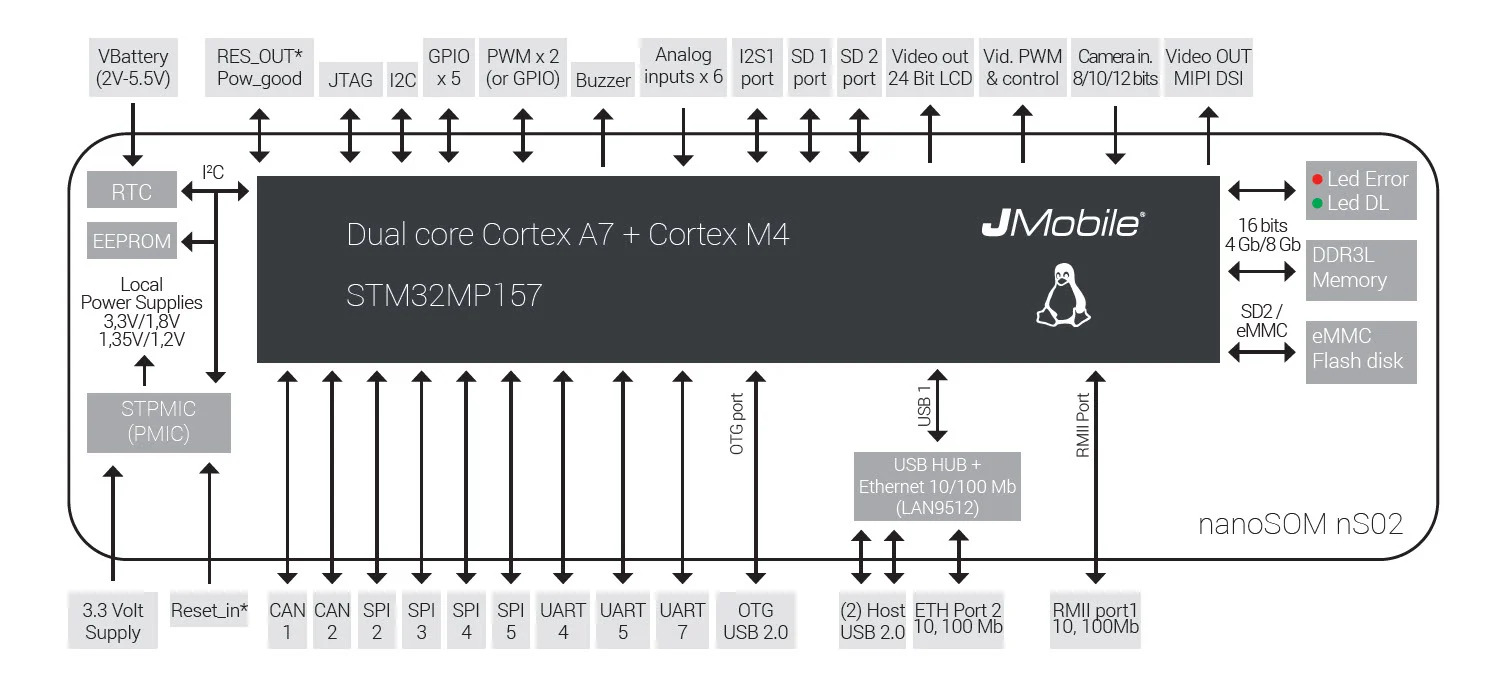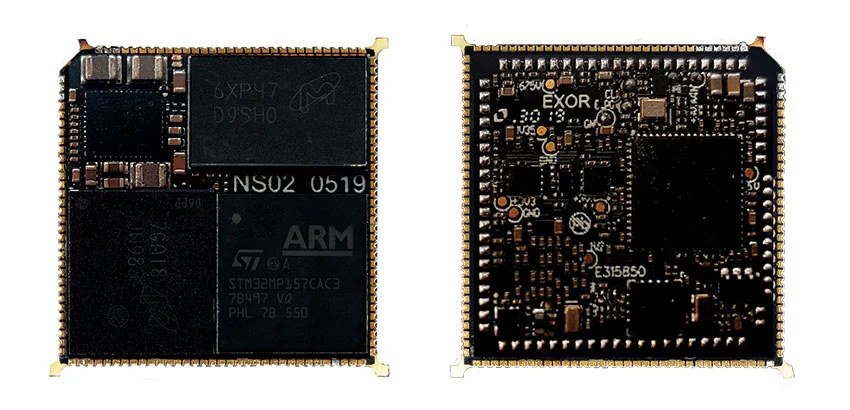Arrow Electronics and Exor Embedded have announced the nanoSOM nS02 system-on-module based on the 800MHz version of STMicro STM32MP1 microprocessor unveiled last February.
The 25.4 x 25.4mm module is designed for IoT edge applications such as smart IoT controllers and gateways, cloud edge interfaces, and building automation. A supporting development kit can also be provided by Arrow Electronics.
- SoC -STMicro STM32MP157 dual-core Cortex-A7 processor @ 800MHz with 3D GPU
- System Memory – Up to 1GB DDR3L
- Storage – Up to 32GB eMMC flash, 4KB EEPROM
- USB & Ethernet Hub – Microchip LAN9512 controller
- 131x solder pads with
- Storage – 2x SD
- Video Output – 24-bit RGB LCD parallel or 2-lane MIPI DSI
- Camera Input – 8,10,12-bit video input
- Audio – 1x I2S channel
- Networking – 2x 10/100M Ethernet (one native, one via USB hub)
- USB – 2x USB 2.0 host, 1x USB OTG
- 4x SPI, 1x I2C, 2x CAN, 3x UART
- Analog Inputs
- GPIOs with interrupt capability
- Reserved Pins for Power-Fail, Power Good, Reset IN, Reset Out functions.
- HW Security – Secure boot, Trust Zone IPs
- Misc – RTC, watchdog, voltage monitor
- Power Supply – 3.3V; VBB for RTC backup; STPMIC power management IC
- Dimensions – 25.4 x 25.4 x 3 mm
- Temperature Range – Commercial: 0°C to 70°C; industrial: -40°C to +85°C

Exor provides a Linux RT board support package (BSP) or Android BSP for the module which also fully supports the company’s X Platform including Exor Embedded Open HMI software, Corvina Cloud IIoT platform, and IEC61131 CODESYS or Exor xPLC runtime.
The OpenHMI software platform enables the design of SVG and HTML5 based graphical user interfaces, and device connectivity with over 200 communication protocols. The company also says MQTT and OPC-UA interfaces are available together with cloud connectivity for telemetry and remote assistance using OpenVPN software.
NanoSOM nS02 system-on-module is available now in several standard configurations with 256MB or 512MB DDR RAM with 4GB eMMC flash disk, or 1GB DDR RAM with 8GB eMMC flash disk. The lifecycle of the module is guaranteed to be at least 10 years from the time of product launch. You’ll find additional details, as well as documents such as datasheet and user manual, on the product page. What about the development kit mentioned in the introduction? It doesn’t show up anywhere, and Arrow website currently only sells Exor devkits for the earlier NanoSOM NS01 based on NXP i.MX 6UltraLite processor.

Jean-Luc started CNX Software in 2010 as a part-time endeavor, before quitting his job as a software engineering manager, and starting to write daily news, and reviews full time later in 2011.
Support CNX Software! Donate via cryptocurrencies, become a Patron on Patreon, or purchase goods on Amazon or Aliexpress





